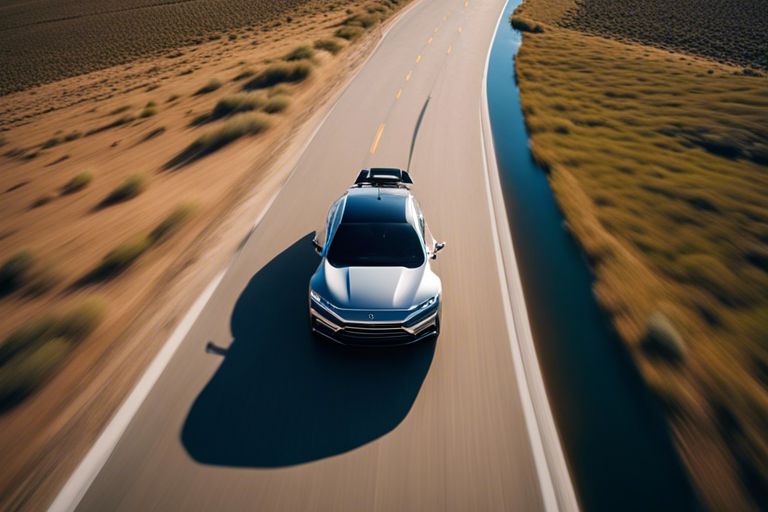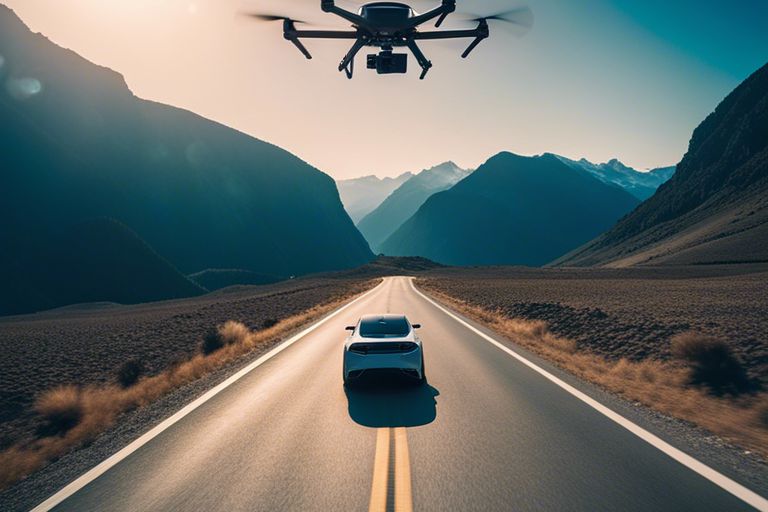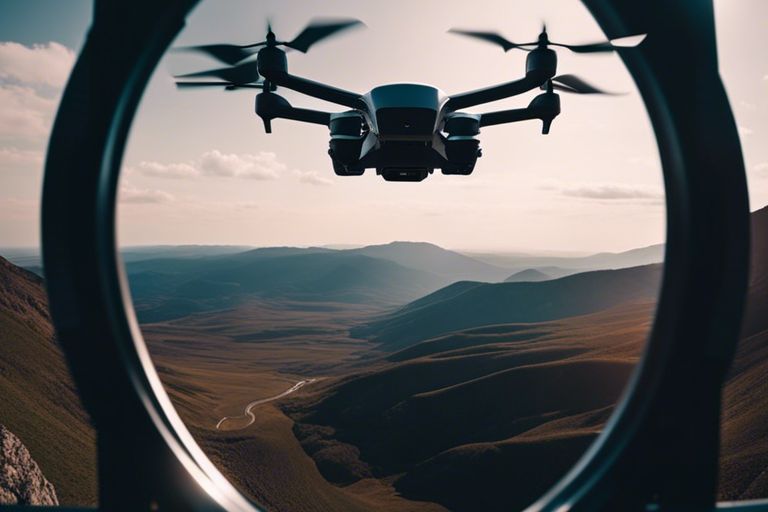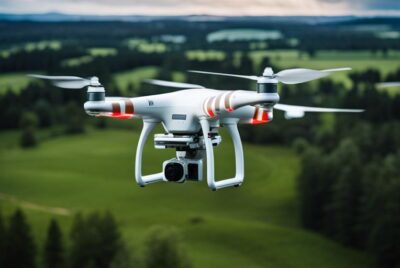“FPV Drones – First-Person View Cinematography Adventures”
FPV drones have revolutionized the world of cinematography, offering a thrilling and immersive way to capture breathtaking aerial footage. From sweeping landscapes to adrenaline-fueled action shots, these agile and versatile drones provide filmmakers and enthusiasts with endless creative possibilities. In this blog post, we will explore into the exhilarating world of FPV drones and explore the exciting adventures of first-person view cinematography.
Understanding FPV Drone Technology
A fast-growing trend in the world of drone enthusiasts and cinematographers is the use of First-Person View (FPV) drones. These drones offer a unique perspective by allowing the pilot to see through the eyes of the drone via a live video feed, creating an immersive and exhilarating flying experience. Understanding the technology behind FPV drones is essential for those looking to explore this exciting realm.
Components of an FPV System
An FPV system consists of several key components that work together to provide the immersive experience that sets FPV drones apart from traditional ones. These components include a camera mounted on the drone, a video transmitter, a receiver, goggles or a monitor for viewing the live feed, and a controller for piloting the drone. The real-time video feed allows the pilot to navigate the drone through tight spaces and perform dynamic maneuvers with precision.
Furthermore, the video transmitter sends the live video feed from the drone to the receiver, which then displays it on the goggles or monitor worn by the pilot. The controller provides manual control over the drone’s movements, giving the pilot the ability to fly with agility and explore new perspectives in aerial cinematography.
The Evolution of FPV Gear and Capabilities
Over the years, FPV gear has evolved significantly, pushing the boundaries of what is possible in aerial cinematography. Advances in technology have led to smaller and lighter cameras with higher resolutions, improved video transmission systems that offer clearer and more stable feeds, and smarter drone designs that enhance maneuverability and speed. These advancements have made FPV drones more accessible to enthusiasts and professionals alike, opening up a world of creative possibilities.
Plus, the development of specialized goggles with immersive displays and ergonomic designs has greatly enhanced the pilot’s experience, allowing for longer and more comfortable flights. These advancements in FPV gear and capabilities continue to drive innovation in the industry, making FPV drones a thrilling and engaging tool for capturing breathtaking aerial footage.

The Art of FPV Cinematography
Assuming you’ve mastered the basics of flying your FPV drone, it’s time to probe into the art of FPV cinematography. Capturing breathtaking footage from a first-person perspective adds a new dimension to your filmmaking skills and opens up a world of creative possibilities.
Techniques for Capturing Stunning Footage
On your quest to capture stunning FPV footage, mastering the art of smooth and controlled movements is essential. Utilize slow and deliberate maneuvers to create cinematic shots that flow seamlessly. Experiment with different angles, speeds, and camera movements to add depth to your footage and evoke emotions in your audience.
On the technical side, understanding the capabilities of your drone’s camera and how to optimize settings for different lighting conditions will greatly enhance the quality of your footage. Pay attention to composition, framing, and focus to create visually engaging shots that stand out from the rest.
Challenges and Solutions in FPV Filming
Solutions to challenges such as maintaining a stable and consistent altitude, managing battery life for longer flight times, and dealing with signal interference are crucial for successful FPV filming. Implementing flight modes that assist in maintaining altitude and practicing efficient battery management techniques will help you overcome these obstacles.
This subsection will dive deeper into the challenges faced by FPV filmmakers and provide expert solutions to help you navigate tricky situations and elevate the quality of your footage. Stay tuned for valuable insights and tips on how to tackle common issues in FPV cinematography.
FPV Drones in the Industry
Despite being a relatively new technology, FPV drones have already made a significant impact in various industries. From film and television to sports and entertainment, these drones have revolutionized the way professionals approach cinematography and aerial footage.
Applications in Film and Television
An exciting aspect of FPV drones is their use in the film and television industry. Directors and cinematographers can now capture dynamic shots and angles that were previously impossible. The agility and flexibility of FPV drones allow for creative storytelling and unique perspectives, enhancing the overall production quality of films and TV shows.
Additionally, FPV drones are cost-effective alternatives to traditional filming methods such as helicopters or cranes. This has opened up new possibilities for independent filmmakers and production companies with limited budgets, democratizing access to high-quality aerial footage.
The Rise of FPV Drone Racing and Entertainment
Television broadcasts of FPV drone racing events have gained popularity in recent years, attracting a growing audience of enthusiasts and casual viewers alike. The fast-paced nature of FPV drone racing, combined with the thrill of first-person views, creates an engaging spectator sport that continues to captivate audiences worldwide.
It is not uncommon to see professional drone racing leagues and competitions being broadcast on mainstream sports channels, solidifying FPV drone racing as a legitimate and exciting form of entertainment. The skill and precision required to maneuver these drones at high speeds through intricate courses have elevated drone racing to a competitive sport that demands respect and admiration.

Advancing Your FPV Skills
Essential Tips for Beginners
Not sure where to start with your FPV drone journey? Here are some essential tips for beginners:
- Invest in a quality FPV drone to ensure stability and durability.
- Practice in open areas to avoid obstacles and ensure safety.
- Learn the basics of drone controls and make sure to master them before attempting advanced maneuvers.
This will set a strong foundation for your FPV skills and help you progress smoothly in your cinematic adventures.
Mastering Advanced Maneuvers for Professional Cinematography
Ready to take your FPV cinematography to the next level? Here are some advanced maneuvers to master:
- Power Loops
Technique Execution Gain altitude Perform a backflip while throttling up - Split S
Technique Execution Dive downwards Perform a half-roll and pull up
Mastering these advanced maneuvers will add dynamic shots to your cinematography and showcase your skills as a professional FPV pilot.

Final Words
Now, you have a glimpse into the thrilling world of FPV drones and the art of first-person view cinematography. With FPV drones, you can capture breathtaking aerial footage and immerse yourself in exhilarating flying experiences. Whether you are a hobbyist, a filmmaker, or a daredevil seeking adrenaline-pumping adventures, FPV drones offer endless possibilities for creativity and exploration. So grab your FPV drone, put on your goggles, and get ready to launch on unforgettable cinematic journeys in the skies!



